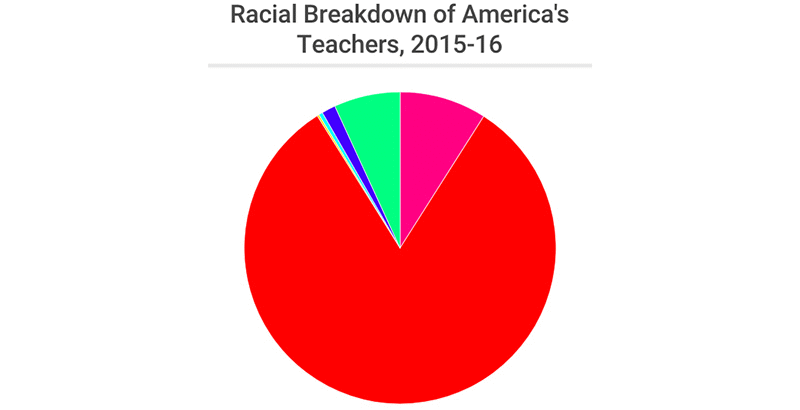In 2014, according to U.S. Department of Education projections, the demographics of the nation’s classrooms were set to break a historic barrier: For the first time, the majority of students in America’s public schools would no longer be white.
Based on population trends, National Center for Education Statistics predicted that 50.3 percent of the student body for the 2014-15 school year would be people of color — a precursor to the country as a whole becoming majority-minority in the next three decades. (The Office for Civil Rights is expected to release more complete student demographic information for that time span in the next year.)
The system’s demographic shift is partially linked to a decline in the white population, which dropped from 58.45 percent of students in 2003-04 to an estimated 50.4 percent a decade later. During the same period, the percentage of blacks dropped slightly, from 16.88 percent to roughly 15.5 percent, while the Asian population saw a small increase, from 4.53 percent to an estimated 5.2 percent.
But the shift is largely driven by exponential growth in the Hispanic population, which is younger and has a higher fertility rate than that of whites. Latino students made up 24.8 percent in 2013-14, up from 18.94 percent in 2003-04. During that span, every state saw its share of Hispanic students increase. Over the same period, every state except Mississippi and Washington, D.C., saw its share of white students decline.
A snapshot of how many more Hispanic students have enrolled in schools over the past decade:
In recent years, the Hispanic growth rate has slowed and even been surpassed by that of the Asian population. Nonetheless, Hispanics accounted for 51 percent of overall U.S. population growth from 2016 to 2017, according to the Pew Research Center.
The shift is comprehensive. Most communities are seeing increased diversity, even small towns and rural regions, according to a 2015 report by the Urban Institute. Although Florida and states in the Southwest have seen the most dramatic influx of Hispanic students, school districts across the nation are becoming less white and can expect more diversity each year, at least for the next few decades. For example, over the past five years, the number of districts in Minnesota with majority-minority enrollment has doubled, with almost a quarter of all public school students there attending classes in such districts, MinnPost reported.
Go Deeper: Learn more about how other student subgroups shifted over the past decade — and how this all compares to the stagnant racial diversity of America’s teaching force.
Get stories like these delivered straight to your inbox. Sign up for The 74 Newsletter


;)
